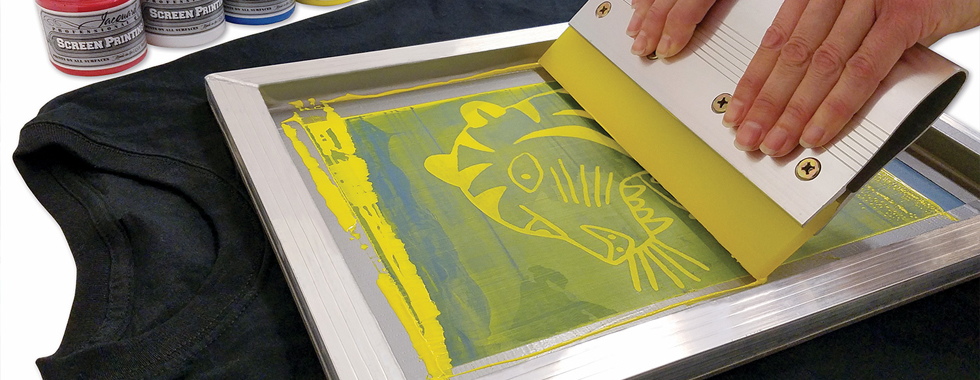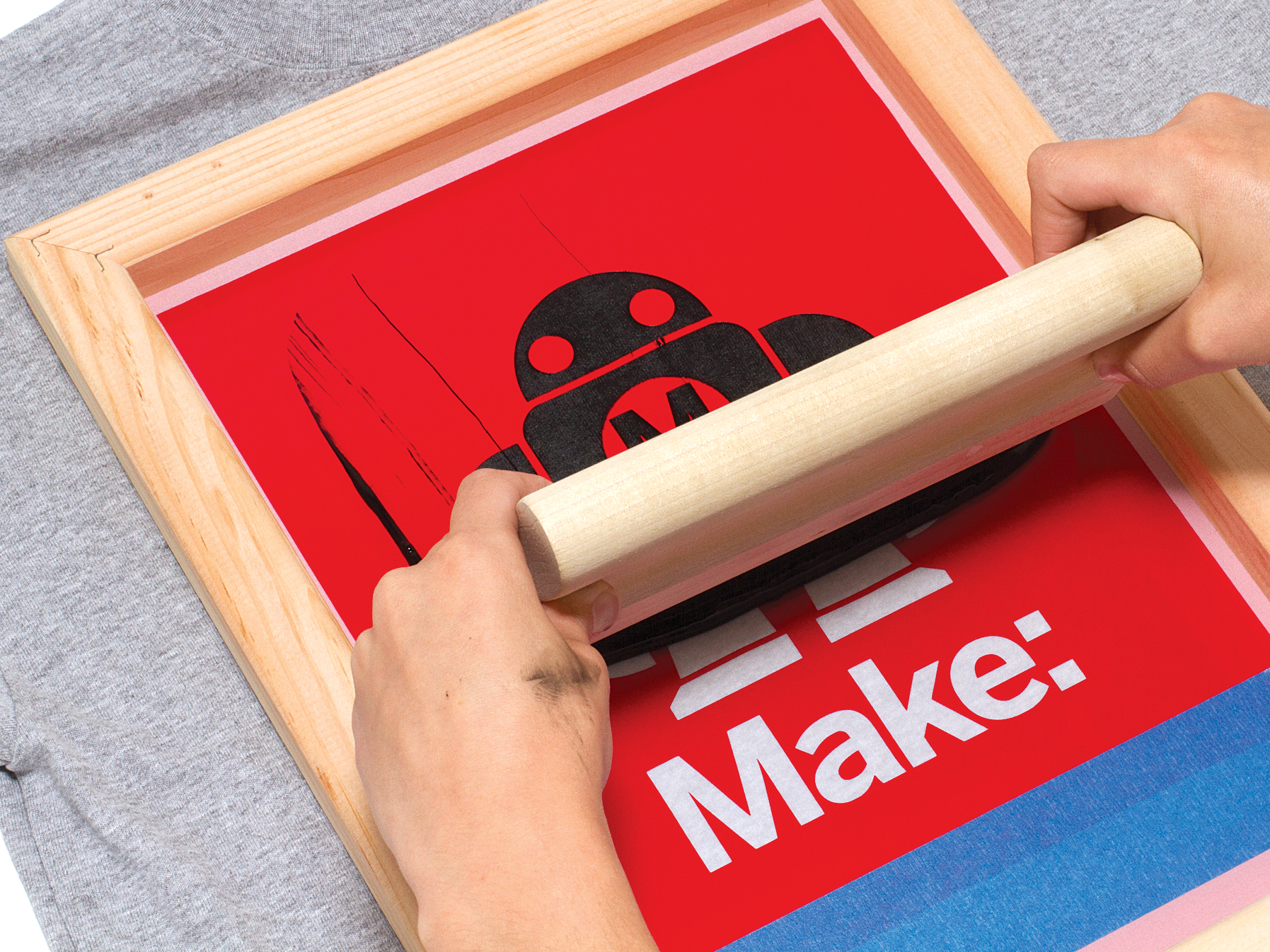The Vital Guide to Understanding Screen Printing and Its Versatile Makes use of
Screen printing has a rich background that goes back to ancient times, advancing right into an innovative method used across numerous sectors today. This overview discovers the complexities of the screen printing process, detailing its applications in home, style, and marketing decoration - 10:9 Design contact. Comprehending these fundamentals can open creative possibility for both business and imaginative jobs. The complying with sections will disclose vital ideas and methods to enhance one's screen printing ventures
The History of Screen Printing
Although screen printing has origins that trace back centuries, its evolution reflects the imaginative and technical improvements of various societies. Coming from old China, the strategy was at first utilized for enhancing fabrics and later infect Japan, where it became integral to Ukiyo-e woodblock printing. The technique changed to Europe in the 18th century, where it acquired popularity among craftsmens and commercial printers. The innovation of image solution in the 20th century changed screen printing, enabling more intricate styles and greater effectiveness. Musicians like Andy Warhol additionally moved its popularity, using the tool to create iconic works that mixed commercialism and art. By the late 20th century, screen printing had established itself as a functional method, utilized in fashion, advertising, and fine art. Today, it proceeds to advance, integrating digital modern technology and broadening its applications throughout different industries.
The Screen Printing Refine Explained
Screen printing changes creative visions right into concrete layouts with a collection of specific steps. Initially, a photo is developed and after that moved onto a screen, usually constructed from fine mesh material stretched over a framework. A light-sensitive emulsion is applied to the screen, which is revealed to light, hardening in areas not covered by the image. After washing out the unhardened solution, a pattern is developed.
Next, the screen is placed over the substrate, whether it be fabric, paper, or one more product. Ink is after that pressed through the open locations of the stencil making use of a squeegee, transferring the layout onto the substrate below. This procedure can be repeated for multiple colors, requiring different screens for each and every tone. The printed product is healed using heat to assure the ink sticks effectively, resulting in a durable, lively style ready for usage.
Sorts Of Screen Printing Techniques
.png)
In addition, specialty methods, such as discharge screen printing, get rid of color from the fabric to produce softer prints, while foil screen printing applies metal aluminum foil to accomplish a glossy finish (10:9 Design contact). Each method offers distinct features, accommodating numerous imaginative requirements and production scales, ultimately expanding the opportunities within the screen printing domain
Applications of Screen Printing in Numerous Industries

In addition, the signage and advertising and marketing markets make use of screen printing for producing captivating screens and banners. This approach enables bold colors and detailed designs that catch focus. In electronics, screen printing is employed for using conductive inks to circuit card, important for element connections. The home style market welcomes screen printing to generate distinctive styles on fabrics and wall surface art. In general, screen printing functions as a crucial tool across diverse areas, boosting products with customized and visually attractive graphics.
Tips for Effective Screen Printing Projects
While taking on a screen printing project, mindful interest to information can substantially enhance the last result. Selecting top quality materials is important; this includes the screen, inks, and substratums. Making use of ideal mesh matters can influence ink deposition and information resolution. Preparation is similarly essential; complete cleaning of displays and appropriate direct exposure times ensure crisp prints.
Next off, exact registration is essential for multi-color prints. Utilizing positioning devices can aid accomplish accurate layering. Additionally, testing prints on scrap materials before manufacturing aids recognize possible concerns without wasting resources.

Regularly Asked Concerns
What Materials Are Ideal for Screen Printing on Material?
Cotton and polyester blends are excellent for screen printing on fabric due to their longevity and ink absorption. Additionally, specialized fabrics like silk or canvas can create unique appearances and finishes, enhancing the general design top quality.
Exactly how Do I Tidy and Maintain Screen Printing Equipment?
To keep and cleanse screen printing tools, one need Visit Your URL to routinely clean screens with proper solvents, check mops for wear, lube moving components, and shop all things in a dry, dust-free environment to lengthen their life-span.
What Are the Environmental Impacts of Screen Printing?
Screen printing can have considerable environmental influences, consisting of chemical waste from solvents and inks, water usage throughout cleansing processes, and energy intake. Sustainable methods and environment-friendly materials are necessary for decreasing these adverse effects.
Can Screen Printing Be Done in the house Efficiently?
Screen printing click over here can be properly done at home with the ideal products and strategies. Hobbyists can develop high quality prints, though success relies on their skill level, devices, and understanding of the process entailed.
What Are the Prices Associated With Beginning a Display Printing Organization?

Starting a screen printing company includes expenses for devices, products, and work space. Preliminary costs normally range from a couple of hundred to a number of thousand dollars, relying on the range, top quality of machinery, and preferred manufacturing ability.
Screen printing has an abundant history that dates back to ancient times, evolving into an advanced method utilized across numerous industries today. One more method, rotary screen printing, employs round screens, assisting in continual printing on textile rolls, therefore improving performance for large-scale productions. Additionally, specialized strategies, such as discharge screen printing, eliminate color from the fabric to produce softer prints, while aluminum foil screen printing applies metal aluminum foil to attain a shiny surface. In the fashion field, screen printing is extensively used to create vivid layouts on garments, enabling brands to display their distinct designs. Cotton and polyester blends are excellent for screen printing on textile due to their longevity and ink absorption.